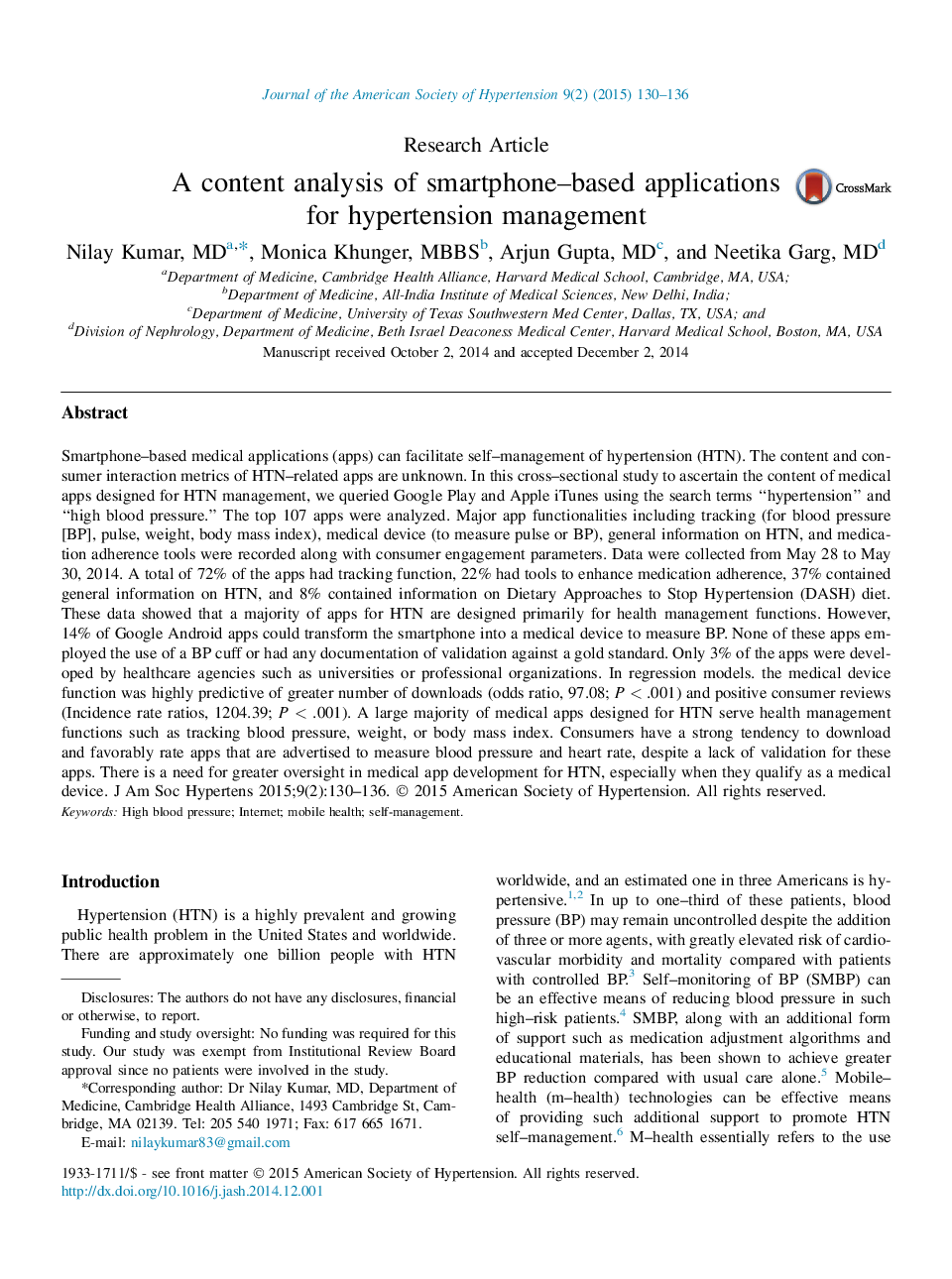| Article ID | Journal | Published Year | Pages | File Type |
|---|---|---|---|---|
| 2956548 | Journal of the American Society of Hypertension | 2015 | 7 Pages |
•A majority of apps for HTN management are designed to facilitate self-management by recording/tracking BP, providing text message feedback, general information on HTN and/or tools to enhance medication adherence•A small number of apps allow cuffless BP measurments utilizing the built-in smartphone camera. These apps are highly rated and downloaded by users despite their lack of validation against a gold standard•Greater oversight in app development is needed, especially when they can transform the smartphone into a medical device
Smartphone–based medical applications (apps) can facilitate self–management of hypertension (HTN). The content and consumer interaction metrics of HTN–related apps are unknown. In this cross–sectional study to ascertain the content of medical apps designed for HTN management, we queried Google Play and Apple iTunes using the search terms “hypertension” and “high blood pressure.” The top 107 apps were analyzed. Major app functionalities including tracking (for blood pressure [BP], pulse, weight, body mass index), medical device (to measure pulse or BP), general information on HTN, and medication adherence tools were recorded along with consumer engagement parameters. Data were collected from May 28 to May 30, 2014. A total of 72% of the apps had tracking function, 22% had tools to enhance medication adherence, 37% contained general information on HTN, and 8% contained information on Dietary Approaches to Stop Hypertension (DASH) diet. These data showed that a majority of apps for HTN are designed primarily for health management functions. However, 14% of Google Android apps could transform the smartphone into a medical device to measure BP. None of these apps employed the use of a BP cuff or had any documentation of validation against a gold standard. Only 3% of the apps were developed by healthcare agencies such as universities or professional organizations. In regression models. the medical device function was highly predictive of greater number of downloads (odds ratio, 97.08; P < .001) and positive consumer reviews (Incidence rate ratios, 1204.39; P < .001). A large majority of medical apps designed for HTN serve health management functions such as tracking blood pressure, weight, or body mass index. Consumers have a strong tendency to download and favorably rate apps that are advertised to measure blood pressure and heart rate, despite a lack of validation for these apps. There is a need for greater oversight in medical app development for HTN, especially when they qualify as a medical device.
